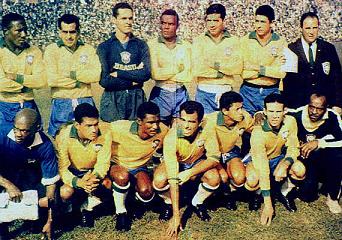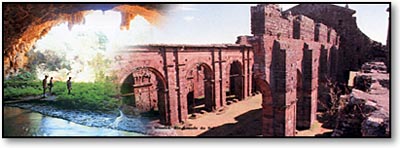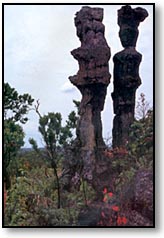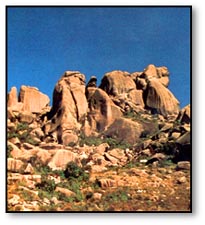In many people's memeroy, Thailand just a developing country, there may be poor, lack of food and money, but now I think people need to change their idea of Thailand, if you go travel in here, I can promise you must do want turn back!
I pay my attendence in Thailand because of their movies, in recent years, Thailand's movies are become more and more popular, there are can compared with Janpenses' and Chinese's movies, such as < the thing about first love>,
<The Red Eagle>, <soul's code> and so on.
Dozens of
foreign films have been shot in Thailand, with the kingdom either playing itself or standing in for a neighboring country, such as
Vietnam or
Cambodia.
The availability of
elephants, exotic jungle and beach settings, relatively low production costs, and a mature domestic film industry that provides a legion of experienced crew members, have made
Thailand an attractive location for many
Hollywood films and other foreign productions.
Films set in Thailand include
Around the World in Eighty Days,
The Big Boss,
The Man with the Golden Gun and
The Beach. And Thailand has been used as a stand-in setting for such
Vietnam War-era films as
The Deer Hunter,
Good Morning Vietnam,
Casualties of War and
The Killing Fields.
In addition to providing work for Thai film crews and extras (including the
Royal Thai Army), films that use Thailand as a location help Thailand promote itself as a tourist destination. As a result, the
Tourism Authority of Thailand is keenly interested in attracting production companies to make films in the Kingdom.
However, over the months, the locations of some films have been criticized as being harmful to the environment. The island used to depict villain's hideout in
The Man with the Golden Gun is now a major draw for tourism operators in
Phuket's
Phang Nga Bay. Environmentalists also protested the filming of
The Beach, in which the film crew made alterations to the location that were viewed as damaging.
History
Hollywood has played an important role in the development of Thailand's film industry. One of the first feature films made in Thailand,
1923's
Miss Suwanna of Siam, was a Hollywood co-production, made with the royal assistance of
King Vajiravudh, who gave the production free use of his 52 automobiles, 600 horses, use of the
Royal Thai Navy, the Grand Palace, the railways, the rice mills, rice fields, coconut groves, canals and elephants.
The
1927 documentary,
Chang, by
Merian C. Cooper and
Ernest B. Schoedsack, was made in Thailand.
In recent years, even the
Bollywood film industry has chosen Thailand as location.
For 2005, the Thailand Film Office reported that 497 films and productions earned 1.14 billion
baht, a jump from the 441 films and productions that earned 1.13 billion baht in 2004. The line-up in 2005 included 248 documentaries, 188 commercials, 21 feature films, 13 TV series and 27 music videos. The leading foreign films made on location were Japanese, with 161 productions, followed by Europe with 105, the US with 23 and Australia with 20.
Thailand aims to be Asia’s Movie production Hub
Every year, more than 400 foreign productions are shot in Thailand, a country which attracts more and more filming thanks to the diversity of its scenery and the professionalism of its local staff. The government is also expecting an increase of foreign tourist due to the positive impact of movies on the foreign audience.
Everybody knows ‘Bollywood”, the Indian Mecca for filmmakers of the sub continent. But what about ‘Bangkollywood” ? Is it really on his way, or is it just another gimmick bound to fade away ? Even though 2010 started well with more than 110 foreign productions shot in Thailand between January and February, the recent political crisis between the “Red T-shirts” and the government canceled or delayed many shootings. To regain the trust of foreign companies, the government is now preparing tax exemptions for foreign filming in Thailand. According to the Thailand Film Office, there were 116 foreign movies which were filmed in January and February this year, generating a total income of 213 million THB. Out of this number, 40 were documentaries, 60 advertising movies, 5 feature films, 7 TV movies, and 4 music videos. A majority of the production was from Japan, a total of 33, followed by India, 22, and Europe, 20.
In Thailand, there are many people to choose from when you are making a film. Also, all of the equipment houses are here, so if you need some equipment or lights right away you can get it without stopping the production. Bangkok to me is like the LA of Thailand
says David Winters (The King Maker, 2005)
During 2009, about 500 foreign productions have been shot in the Kingdom, among those were 166 TV commercials, 37 feature movies and 181 documentaries, that brought more that 890 millions of baths. Japan is the most active country in Thailand, followed by India and European countries. Movies like “Star Wars, Episode III”, Oliver Stone’s “Alexander” or “The Beach” were shot in Thailand.
Thailand is one of the most developed countries in South East Asia for audiovisual industry. It has great scenery, good equipment and qualified staff, and with very competitive prices.
explains Alain Brulfert, managing-director of Reperages Group Thailand.
The variety of Thailand’s landscapes offers a wide choice for producers: beaches, modern cities, tropical forests, mountains, almost everywhere can be a potential shooting set, for documentaries as well as fiction movies. A lot of American movies depicting the Vietnam War were also actually shot in Thailand, like the “Rambo” series, “Good Morning Vietnam” or “The Deer Hunter”.
In the end, we holp you have chance to travel in Thailand and to know more about their move, now Thailand is a new county!!

 Pelé, one of the world's most recognized players, led Brazil to three of those championships and is the top scorer of all time in the sport. After the third win, Brazil kept the World Cup trophy permanently. Brazil competed in the 2006 World Cup as one of the favorites to win the competition, however it placed only 5th. Some of the contemporary talents in the national team prominent in the football world include Romário, Rivaldo and Ronaldo. Some of these players can be considered super-stars, achieving celebrity status internationally and signing sports contracts, as well as advertisement and endorsement contracts, in the value of millions of dollars. The current holder of the title of best football player in the world, according to FIFA, is Ronaldinho, who won the FIFA World Player of the Year prize in 2004 and 2005.
Pelé, one of the world's most recognized players, led Brazil to three of those championships and is the top scorer of all time in the sport. After the third win, Brazil kept the World Cup trophy permanently. Brazil competed in the 2006 World Cup as one of the favorites to win the competition, however it placed only 5th. Some of the contemporary talents in the national team prominent in the football world include Romário, Rivaldo and Ronaldo. Some of these players can be considered super-stars, achieving celebrity status internationally and signing sports contracts, as well as advertisement and endorsement contracts, in the value of millions of dollars. The current holder of the title of best football player in the world, according to FIFA, is Ronaldinho, who won the FIFA World Player of the Year prize in 2004 and 2005.  Pelé, one of the world's most recognized players, led Brazil to three of those championships and is the top scorer of all time in the sport. After the third win, Brazil kept the World Cup trophy permanently. Brazil competed in the 2006 World Cup as one of the favorites to win the competition, however it placed only 5th. Some of the contemporary talents in the national team prominent in the football world include Romário, Rivaldo and Ronaldo. Some of these players can be considered super-stars, achieving celebrity status internationally and signing sports contracts, as well as advertisement and endorsement contracts, in the value of millions of dollars. The current holder of the title of best football player in the world, according to FIFA, is Ronaldinho, who won the FIFA World Player of the Year prize in 2004 and 2005.
Pelé, one of the world's most recognized players, led Brazil to three of those championships and is the top scorer of all time in the sport. After the third win, Brazil kept the World Cup trophy permanently. Brazil competed in the 2006 World Cup as one of the favorites to win the competition, however it placed only 5th. Some of the contemporary talents in the national team prominent in the football world include Romário, Rivaldo and Ronaldo. Some of these players can be considered super-stars, achieving celebrity status internationally and signing sports contracts, as well as advertisement and endorsement contracts, in the value of millions of dollars. The current holder of the title of best football player in the world, according to FIFA, is Ronaldinho, who won the FIFA World Player of the Year prize in 2004 and 2005. 

 impoverished sailors, who were far more interested in profitable trade and subsistence agriculture than in territorial expansion. The country's interior remained unexplored.
impoverished sailors, who were far more interested in profitable trade and subsistence agriculture than in territorial expansion. The country's interior remained unexplored. Brazil has the sixth largest population in the world--about 148 million people--which has doubled in the past 30 years. Because of its size, there are only 15 people per sq. km, concentrated mainly along the coast and in the major cities, where two-thirds of the people now live: over 19 million in greater Sao Paulo and 10 million in greater Rio.
Brazil has the sixth largest population in the world--about 148 million people--which has doubled in the past 30 years. Because of its size, there are only 15 people per sq. km, concentrated mainly along the coast and in the major cities, where two-thirds of the people now live: over 19 million in greater Sao Paulo and 10 million in greater Rio.


















